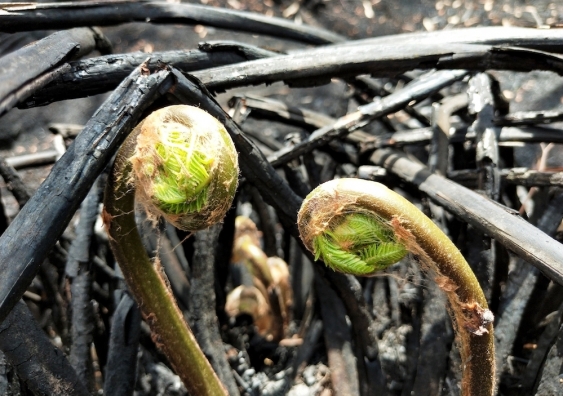Earth Day: How you can help restore our Earth
There are many UNSW projects that citizen scientists can get involved in to help protect the environment.
There are many UNSW projects that citizen scientists can get involved in to help protect the environment.

Today is Earth Day.
Since 1970, the awareness day has been used to drive meaningful action for our planet. This year’s theme is Restore the Earth.
Here are some UNSW Science projects that citizen scientists can get involved in to help restore the Earth – and you don’t need any scientific knowledge or camera skills.
Now in its third year, FrogID is designed to collect audio recordings of frog calls across the nation to monitor frog populations and help save Australia’s threatened frog species.
The project is led by UNSW Science’s Dr Jodi Rowley, who is also a curator of Amphibian and Reptile Conservation Biology at the Australian Museum and lead scientist of FrogID.
The citizen science project has already recorded 230,000 audio recordings and 370,000 frog records. Just last September, research from the Australian Museum and UNSW revealed that many frog species in southeastern Australia have initially survived following the unprecedented bushfires in late 2019 and early 2020.
Members of the public are encouraged to download the FrogID app and continue the count of Australia's frogs so UNSW and Australian Museum scientists can continue to better understand Australia’s frogs, the health of our ecosystems and biodiversity in general.
UNSW Science established the Platypus Conservation Initiative five years ago to reduce the risk of platypus extinction through research, improved management and increased awareness.
A landmark assessment by UNSW scientists last year recommended the platypus be listed as a threatened species under Australia’s and NSW's environmental legislation.
The platypus is already listed as endangered in South Australia and was listed as a threatened species in Victoria in January this year.
Earlier this year, the UNSW scientists also confirmed that significant alterations to flow regimes by dams can have a big impact on downstream platypus populations.
And citizen scientists can help, by recording sightings of platypus by downloading the iNaturalist app or recording their sightings on the iNaturalist website. They can also check recent observations and knowledge gaps in an app developed by the Platypus Conservation Initiative.
The unprecedented scale of the fires in eastern Australia in 2020 provided a clear example of the challenges faced by scientists and conservation biologists as climate changes.
Casey Kirchhoff, a PhD candidate at the UNSW Centre for Ecosystem Science, founded the Environment Recovery Project after the Morton bushfire destroyed her Wingello home in January 2020.
The project invites citizen scientists to share their photos of the bushfire recovery.
The data helps scientists understand how some areas recover better than others, and which animals and plants come back first – information that can help inform recovery plans.
Mrs Kirchhoff says one of the clearest findings was identifying just how useful and important citizen scientists can be in responding to landscape-scale disturbances.
To contribute data, participants can download the mobile app attached to the Environment Recovery Project, which is available via the global citizen science platform iNaturalist, take a photo and upload the image to the app.
Divers in Sydney and the NSW North Coast are being asked to contribute their old and new diving photos, videos, observations and knowledge to the In Bygone Dives project.
UNSW Science researchers plan to use the information to document how the marine life at dive sites has changed from the past and to monitor them into the future.
They say old dive photos hold a wealth of information, and potentially valuable scientific data on the past health of reefs and the species that were present.
They are also keen to track the timing and location of the loss of underwater forests such as kelp from NSW North Coast, between Byron Bay and Tweed Heads.